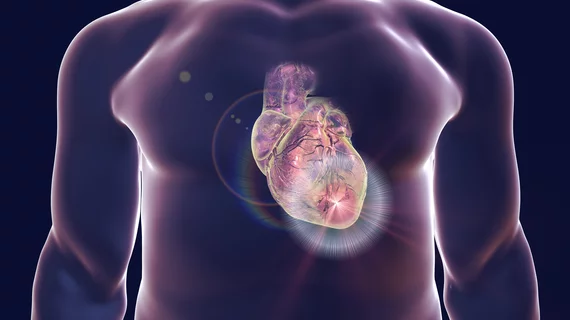Radiologists increasingly utilize coronary CT angiography
Despite coronary CT angiography (CCTA)'s well-documented ability in diagnosing coronary artery disease, its usage has decline since 2007.
Researchers re-examined CCTA's value in a recent Journal of the American College of Radiology study, finding utilization rates are rising in the Medicare population, with radiologists apparently leading the charge.
“Although over time, radiologists’ roles in more established cardiac imaging techniques like coronary angiography, echocardiography, and radionuclide myocardial perfusion imaging (MPI) have become greatly diminished or nonexistent, their presence in CCTA is now quite robust,” wrote lead author David C. Levin, MD, with Thomas Jefferson University Hospital in Philadelphia, and colleagues.
The team looked at the national Medicare Part B master files for 2006 to 2016. Physician specialty codes and place-of-service codes were used to determine utilization rates.
Utilization peaked in 2007 at slightly more than 210 per 100,000 enrollees, with radiologists performing 32 percent of studies compared to cardiologists’ 60 percent.
After declining to 107 per 100,000 enrollees in 2013, the rate jumped to 131 in 2016. During that time, radiologists claimed 58 percent of CCTA compared to 38 percent for cardiologists.
“It thus seems that despite an earlier trend, radiologists have achieved a solid footing in this important aspect of cardiac imaging,” Levin et al. concluded.
Levin and colleagues cited multiple possible factors for the utilization uptick. One explanation is an acceptance of literature citing CCTA as the preferred initial test in suspected CAD patient, despite the lack of data to back-up that claim, the authors noted. The modality’s use during the planning stage of transcatheter aortic valve replacement was also a possibility, they added.
“We believe both the previous factors will continue to spur CCTA growth in future years,” according to Levin and colleagues.
Training radiology residents, fellows and technologists should become a priority based on the specialties’ increasing presence in the cardiovascular imaging space, the authors wrote.
Increased CCTA utilization should encourage both cardiologists and radiologists to lend their expertise to one another when appropriate.
“Our data should not be construed as promoting a turf battle between radiologists and cardiologists, nor as suggesting that interpretations by radiologists are preferable to those by cardiologists,” the researchers remarked. “We believe the recent upturn in Medicare utilization of CCTA is good for patients and hope both specialties will support its further growth.”

